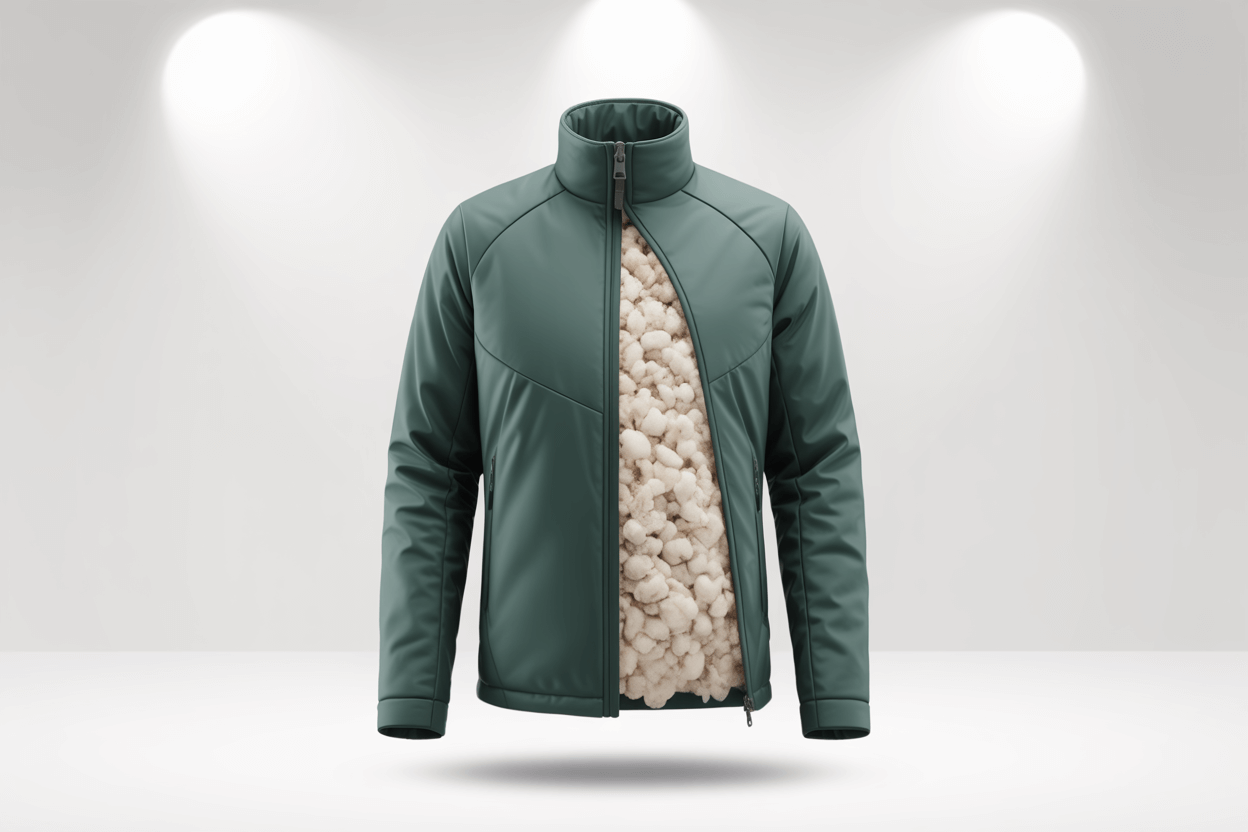As consumer demand for sustainable fashion grows, outerwear brands are innovating with eco-friendly fabrics. Below, we explore key materials—recycled, regenerative, and biodegradable—that are shaping the next generation of jackets.
1. Recycled Polyester and Nylon
Many brands now replace virgin polyester with Recycled PET (rPET) derived from post-consumer plastic bottles. Benefits include:
- Reduced landfill waste—each jacket can use dozens of recycled bottles.
- Lower carbon footprint compared to new polyester, since it bypasses petroleum extraction.
- Comparable performance in durability, moisture-wicking, and quick-dry properties.

2. Regenerative Cotton and Hemp Blends
Traditional cotton farming can deplete soil. In response, regenerative agriculture practices restore soil health and biodiversity. Outerwear blends often use:
- Organic cotton: grown without synthetic pesticides or fertilizers.
- Hemp fibers: naturally pest-resistant and requiring minimal water.
- Wool from regenerative grazing: sheep grazed in rotational systems that improve pasture ecosystems.
3. Biodegradable Insulations
Down is a natural material, but many synthetic fills persist in landfills. Brands are launching biodegradable alternatives such as:
- Bio-based insulation: made from corn or other plant starches that break down in compost.
- Tencel™ Lyocell: wood-based fibers processed via closed-loop systems with minimal waste.
- ReGEN™ insulation: a proprietary upcycled material that biodegrades under industrial composting conditions.

4. PFC-Free and Plant-Based DWR Finishes
Durable Water Repellent (DWR) treatments often use long-chain PFCs that persist in the environment. Sustainable alternatives include:
- Short-chain PFCs: lower environmental persistence (though not fully ideal).
- Fluorine-free DWR: plant-derived waxes or silicones that shed water without PFAS chemicals.
- Waxed cotton: a traditional technique using natural beeswax or plant-based waxes for water resistance.
5. Innovations in Bioplastic and Mycelium
Looking forward, research into bioplastics and mycelium-based materials promises even more sustainable outerwear:
- PLA (Polylactic Acid): a compostable bioplastic derived from corn that can replace some synthetic fabrics.
- Mylo™ mycelium leather: a leather alternative grown from mushroom roots—biodegradable and highly durable.
- Algix® seaweed fibers: turning invasive seaweed into textile fibers that are fully biodegradable.
“Sustainable outerwear is no longer a niche—it’s the future. Fabrics that break down responsibly ensure our gear doesn’t outlive its usefulness.”
— Green Fashion Review
Key Considerations When Buying
When evaluating eco-friendly jackets, keep these in mind:
- Recycled content percentage: Higher percentages indicate less reliance on virgin materials.
- Certifications: Look for bluesign®, Fair Trade, Global Recycled Standard (GRS), and OEKO-TEX® labels.
- End-of-life plan: Brands offering take-back or recycling programs help keep materials out of landfills.
Final Verdict
In 2024, sustainable fabrics are not just marketing buzzwords—they’re proven to perform. Whether you choose recycled polyester, regenerative cotton blends, or biodegradable insulations, these materials help reduce your environmental footprint without sacrificing quality or warmth.

